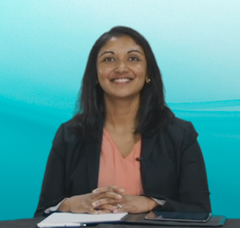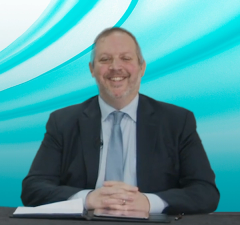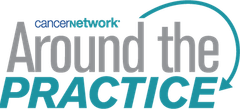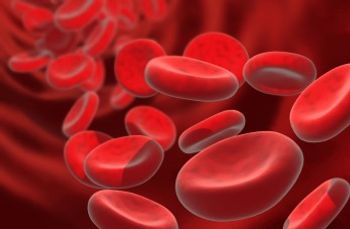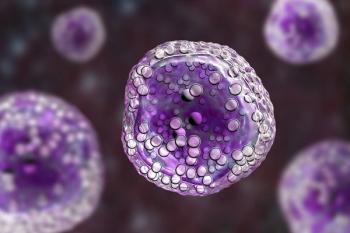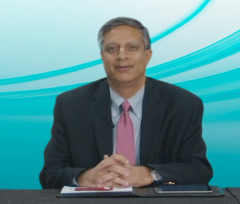
Case Presentation: A 74-Year-Old Woman with Relapsed/Refractory Multiple Myeloma
Experts discuss the case of a woman with relapsed/refractory multiple myeloma and the available treatment options, including novel BCMA-targeted agents.
Episodes in this series

Sagar Lonial, MD: Let’s start this next discussion with another case. Dr Joseph?
Nisha Joseph, MD: This is a 74-year-old woman who initially presented with anemia and hypercalcemia after presenting to a primary care physician with acute onset severe rib pain after sneezing. She was subsequently diagnosed with IgG kappa myeloma. Her marrow showed 30% to 40% clonal plasma cells, FISH [fluorescence in situ hybridization] with multiple trisomies, as well as loss of 1p and gain of 11q. PET [positron emission tomography]–CT confirmed lytic disease throughout the spine with multiple ribs involved and nondisplaced rib fractures bilaterally. The patient was started on lenalidomide, bortezomib, and dexamethasone. She completed 5 cycles with a VGPR [very good partial response] followed by autologous stem cell transplant, and then she started on lenalidomide maintenance.
At 6-year restaging, she was found to have progressive disease. At that time, she was started on salvage therapy with daratumumab, pomalidomide, and dexamethasone in April 2020. Initially, pomalidomide was started at 4 mg on days 1 through 21, and dexamethasone and daratumumab were dosed standardly. The patient unfortunately developed persistent neutropenia, attributable to the pomalidomide. She was started on growth factor twice weekly, with subsequent improvement in her ANC [absolute neutrophil count], and she was continued on pomalidomide dosed at 4 mg. At last follow-up, the patient continues in VGPR and is tolerating therapy well without issue.
Sagar Lonial, MD: This sets up a lot of exciting stuff in myeloma. We know that drugs for the treatment of patients with relapsed/refractory disease always seem to migrate earlier in the treatment paradigm. We’ve seen that in the discussions we’ve had about quadruplets vs triplets, where daratumumab, approved in 2015 or 2016 for refractory myeloma, has moved all the way up front in just under 6 years.
When we think about early relapse in a patient who isn’t daratumumab resistant—they can’t have been daratumumab exposed but aren’t daratumumab resistant—that’s the backbone. Am I going to partner it with an IMiD [immunomodulatory drug] or a PI [proteasome inhibitor]? There are lots of data looking at carfilzomib, bortezomib, and pomalidomide in combination with CD38 antibodies to treat patients with early relapse.
When you get to the later relapse, where we’ve exhausted the efficacy of the Big 6 or the Big 5, depending how you do the math, then we get into a little more limited spray of areas, and you guys are going to talk about that. We’ve got agents like selinexor, with or without other combinations. We’ve got data on belamaf [belantamab mafodotin], which we’ll hear a little about. Then we’ve got 2 approved CAR [chimeric antigen receptor] T cells in that space as well. We have options, and there’s a lot more coming that we’re going to try to cover in the next few moments.
Before we get to that, Dr Kaufman, let me ask you about this concept that we often hear and that’s a holdover from old school medical oncology, which is don’t use your best drugs early, save them for later. Our good friend Dr Rafael Fonseca had an abstract about this, particularly in the older, frailer patient population. Do you want to talk about those data and how to make it useful for clinical practice?
Jonathan Kaufman, MD: He had an interesting analysis where he took both clinical trial and real-world data and ran simulations on expected survival. One key thing he identified and that we likely underestimate in practice is the attrition rate between lines of therapy. The attrition rate in lines of therapy is much higher in the older- or frail-patient population, and ultimately he argues that we need to put our best foot forward up front.
In his simulation, the best foot forward up front in the older non–transplant-eligible population was the combination of daratumumab, lenalidomide, and dexamethasone. With that regimen, as noted before, with the impressive 5-year progression-free survival, which translated to an improvement in overall survival, these patients were able to get the best therapy up front. Even if there was attrition after that, their first remission was the longest remission, as Dr Nooka says all the time. It’s something we repeat over and over, that the first remission is the longest remission. Not only do we have clinical trial data, but this analysis of the clinical trial and real-world data showed that while we don’t have a head-to-head comparison of daratumumab-lenalidomide-dexamethasone vs RVd [lenalidomide, bortezomib, dexamethasone] modified, RVd lite, it looks like daratumumab-lenalidomide-dexamethasone is going to be superior from an overall survival standpoint.
Sagar Lonial, MD: It’s an important and interesting analysis. It clearly has its anchor in the older-, frailer-patient population. But even as we begin to talk about quadruplets in induction therapy, there’s some sense that this is important there as well, where we’ve all clearly talked about the benefit of early anti-CD38 antibodies to try to improve depth of response early on that can then be consolidated and built on in the maintenance setting. Dr Joseph, let me ask you to talk a little about novel BCMA-targeted agents that have been approved in refractory myeloma as well.
Nisha Joseph, MD: Sure. It’s almost been 2 years that we’ve had the approval of the belantamab mafodotin, which is an anti-BCMA antibody-drug conjugate approved based on results from the DREAMM-2 study. That study looked at a highly pretreated population with belantamab dosed at 2.5 mg/kg given every 3 weeks and found an overall response rate of around 30%. Importantly, in subset analysis, when you look at patients who received over 7 lines of therapy compared with those who received fewer lines of therapy, you’re still seeing that response maintained, which is important because that’s where there’s an unmet need and where we’re often using this drug in folks who aren’t clinical trial eligible.
There are ongoing clinical trials looking at belantamab in combination and in different settings in myeloma, in the maintenance phase and earlier. The ALGONQUIN study looked at belantamab with pomalidomide and dexamethasone, which is an approach we’re sometimes utilizing. There are ongoing DREAMM studies looking at different combinations, including pembrolizumab and the DREAMM 5 basket study looking at the belantamab with other small molecule inhibitors.
In addition to belantamab, we also have 2 recent approvals, as you referenced. An anti-BCMA CAR T, cilta-cel [ciltacabtagene autoleucel], was just approved, and ide-cel [idecabtagene vicleucel] was approved in March 2021. Of course we have ongoing development of multiple anti-BCMA therapies, including bispecific T-cell engagers targeting BCMA and CD3, many of which we have at Emory [University] that we’re using in our relapsed/refractory patients.
Sagar Lonial, MD: The list of new agents and targets has more than you can fit on a single slide and still read at a given point.
Transcript edited for clarity.
Newsletter
Stay up to date on recent advances in the multidisciplinary approach to cancer.


